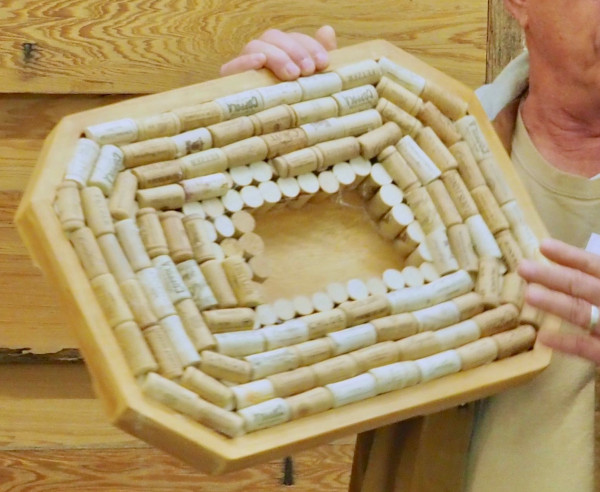Cork Trivet (in progress)


I tried to resaw a basic 2 x 4 on my bandsaw recently and could not get a straight cut. I couldn’t figure out why until I realized that I had been cutting a lot of corks over the past few months working on this fairly large trivet. The trivet consists of poplar sides, joined by birds mouth joints, and a plywood back (bottom) and lots of corks cut to size & shape (on the bandsaw). Corks were supplied by the customer.
I thought that the bandsaw blade may need cleaning so soaked it in some solvent and noticed a stringy film had totally coated the blade. The solvent released the film but did not dissolve it. It turns out this was Suberin from the corks which had coated the blade.
What is Suberin? Where do corks come from?
Cork Oak trees grow in countries around the Mediterranean Sea (Portugal, Algeria, Spain, etc.) with the right combination of sunshine, rainfall and humidity. Beginning at about 25 years old, and every 8 – 14 years thereafter, the bark can be harvested in summer months. It is carefully peeled by hand, in layers with thickness about the length of a typical cork. The strips are plugged to create corks (remaining material is processed into cork boards, flooring, etc.).
Corks have been used to seal bottles for hundreds of years. They are resistant to fire, insects and rot as well as are impermeable to liquid and gasses. Apparently, what makes them impermeable is a natural waxy substance called Suberin.
Leave a Reply
You must be logged in to post a comment.